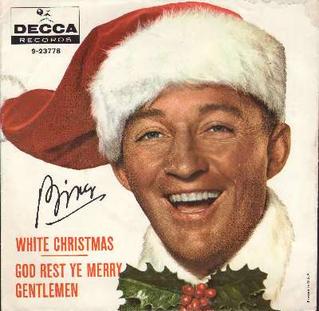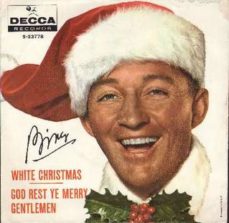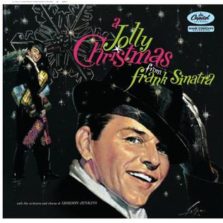
A noble fir stands in the living room, laced with shimmering ribbons and covered in green and red ornaments. Twinkling decoration lights glow in the room darkened by night, illuminating the faces of a family huddled together around a crackling fireplace. Warm mugs of hot chocolate and eggnog are passed around. In the background, the slow murmur of “Silent Night” resonates.
Many families practice the tradition of listening to Christmas songs during the joyous holiday season. Along with other Christmas-themed purchases of fir or pine trees, festive decorations and colorful gifts, the demand for Christmas albums and singles during this merry time skyrockets.

“White Christmas” is the bestselling Christmas single of all time. Written by Irving Berlin in 1940, Bing Crosby’s cover version of “White Christmas” sold approximately 50 million copies worldwide. The lyrics, like many other holiday songs, hold a touch of bittersweet nostalgia. They reminisce on a frolicsome white Christmas “[j]ust like the ones [the singer] used to know” from his childhood.
A majority of the Christmas songs artists release are cover songs — songs recorded by someone other than the song’s original artist or composer. Usually, an artist making a cover song must pay copyright fees to the original composers for the rights to remake the song, but many Christmas songs are a few decades old. Their copyrights, Vox writes, “have [either] lapsed, are owned by the public, or never existed at all.” Without having to pay the copyright fees, there is greater profit in making Christmas cover songs. These famous, familiar covered tunes are associated with Christmas tradition, making them more likely to be recognized and enjoyed.
Some adventurous artists compose original songs for Christmas in the hope that their songs become Christmas staples. However, crafting an original song demands the inspiration and creativity to compose entirely new lyrics and tunes, while making a cover song requires minor tweaks to fit a genre or singer.
Michael Bublé’s album “Christmas” sets a precident for cover albums. Released in 2011, his album is now considered a staple of Christmas. It sold more than 4 million copies in the U.S. alone. In its standard edition, all 15 songs are covers except for “Cold December Night.” The lyrics of “Santa Baby,” one of the album’s covers, are modified to fit a male singer. Eartha Kitt, the original composer of the song, addresses Santa Claus as “Santa baby,” “Santa honey” and “Santa cutie.” Instead, Bublé sings “Santa buddy,” “Santa pally” and “Santa poppy.”
Sometimes, Christmas originals hit the jackpot. Ariana Grande’s single “Santa Tell Me” is an original composition with more than 200 million views on YouTube. What’s surprising is that it did better than her album “Christmas Kisses,” which consisted of a mix of originals and cover songs. “Christmas Kisses” sold 70,000 copies, whereas “Santa Tell Me” had already sold 600,000 copies by 2018.

Christmas wouldn’t be Christmas without mentioning Frank Sinatra. His holiday album, “A Jolly Christmas from Frank Sinatra,” contains a plethora of religious-themed, traditional Christmas classics such as “Silent Night,” “O Little Town of Bethlehem” and “Hark! The Herald Angels Sing.” While Christmas is a holiday that celebrates the birth of Jesus for Christians, carols were originally pagan songs sung to celebrate the winter solstice. When pagan celebrations were adopted by the Christian religion, carols were sung about the Christmas story. Priests, such as Joseph Mohr who composed the lyrics to “Silent Night” in 1818, wrote carols to be sung in Christmas Eve masses.
While traditional Christmas songs revolve around religion, in more modern Christmas music, romance is a popular, lucrative theme.
In 1986, Wham! released “Last Christmas,” which got more than half of a billion views on YouTube. The song sold over 2 million copies in the U.S. The chorus, “[l]ast Christmas / I gave you my heart / [b]ut the very next day you gave it away,” alludes to themes of romantic yearning, nostalgia and heartbreak. In 2011, Justin Bieber released “Mistletoe,” which, in its first week, sold more than 160,000 copies, and currently has more than 400 million views on YouTube. In the song, Bieber uses the classical symbol of Christmas romance, mistletoe, to express longing for his absent lover.
Each year, well-known artists choose how they will address the Christmas market. Whether original or cover, album or single, many factors come into play. In the past, religious-themed songs ruled the market. But now, themes of nostalgia and romance are becoming more popular and lucrative amongst modern original songs.





